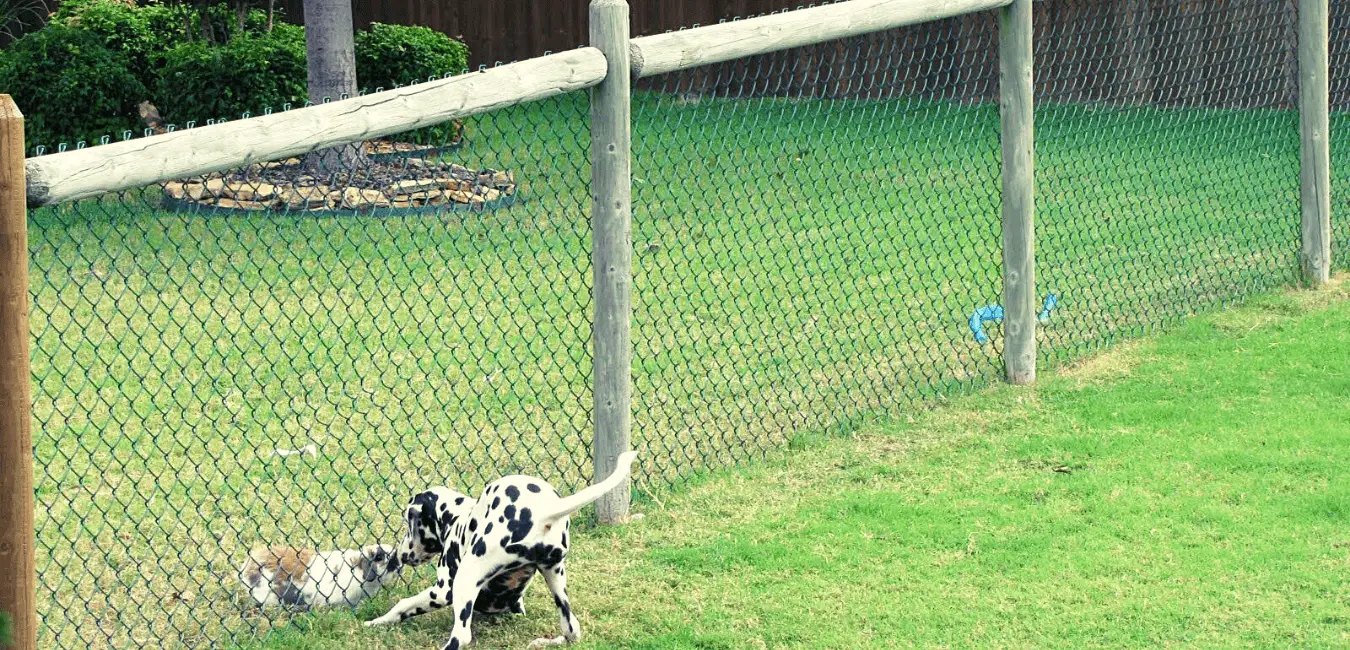Would you like invisible, picket or a fence for privacy? There are as many different styles of dog fencing as there are dogs. Introduce these ten dog fencing ideas to your house.
Every editorial product is independently selected, though we may be compensated or receive an affiliate commission if you buy something through our links.
Contents
A Fence for Any Dog
A dog fence protects your dog and allows them to exercise and run around safely. It also keeps you from having to worry about your dog walking around loose in the area.
Some fences have to be installed professionally and some you can do it yourself. But be assured, for each breed of dog and depending on the particular taste of the homeowner, there is a certain type of fence. Regardless of if you want to have anonymity, make it appealing or not, here are 10 dog fence suggestions to think about.
Invisible Dog Fences

Having an invisible pet fence keeps your dog inside an in-ground wired system that provides adjustable perimeters. Any time your pet tries to cross the line of the control, there will be a gentle shock from the electronic collar that they wear.
PetSafe systems cover a wide area and are highly regarded. However, note that a dog can risk the shock to leap over the invisible fence. And in addition, having invisible fencing would not prohibit any creatures from invading the yard.
Double-Duty Privacy Fences
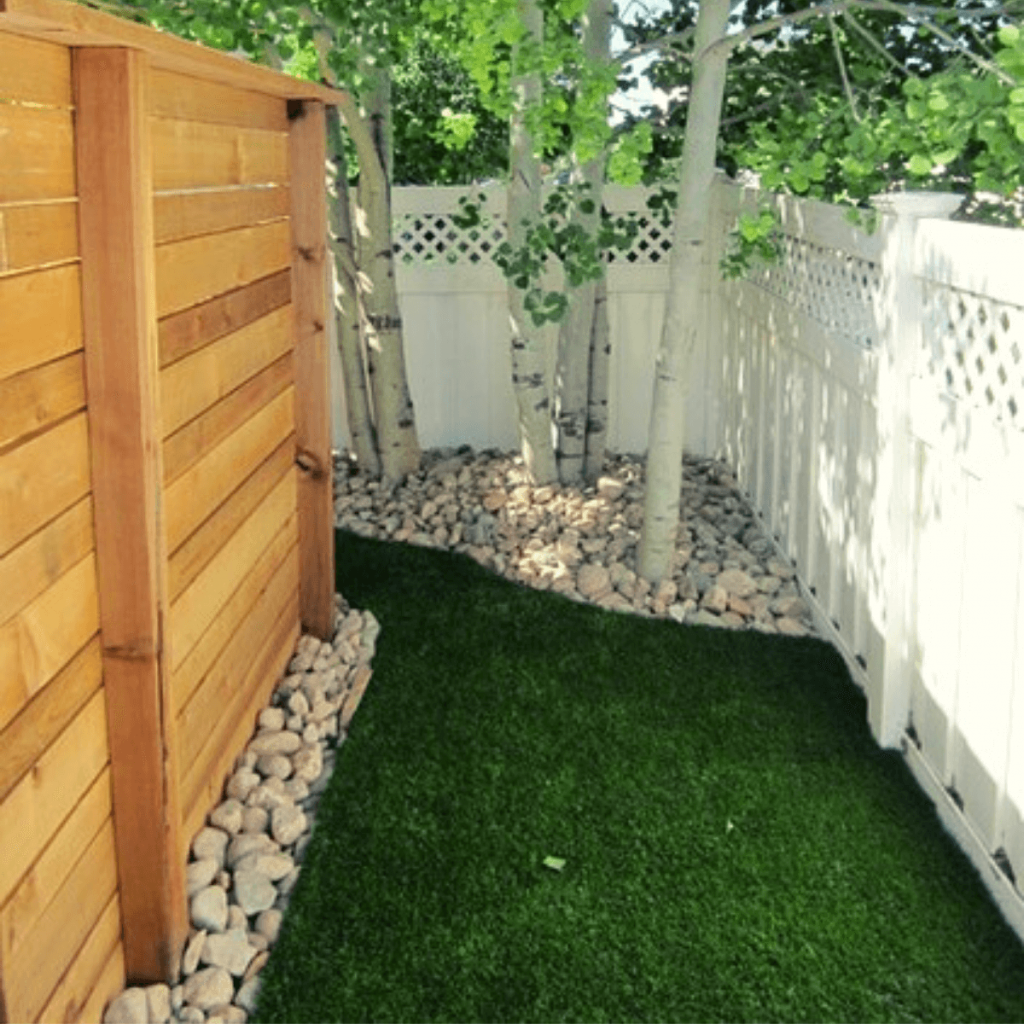
A wooden privacy fence will do double duty to keep your dog safe and protected while providing an intimate and private backyard area. The main drawback to this is that your dog won’t be able to see outside of the fence, but you can solve this with a smart dome fence window built with the pup in mind. Plus, you save on the building costs in a major way if you have the DIY skills to build a privacy fence.
Budget DIY Wire Fencing
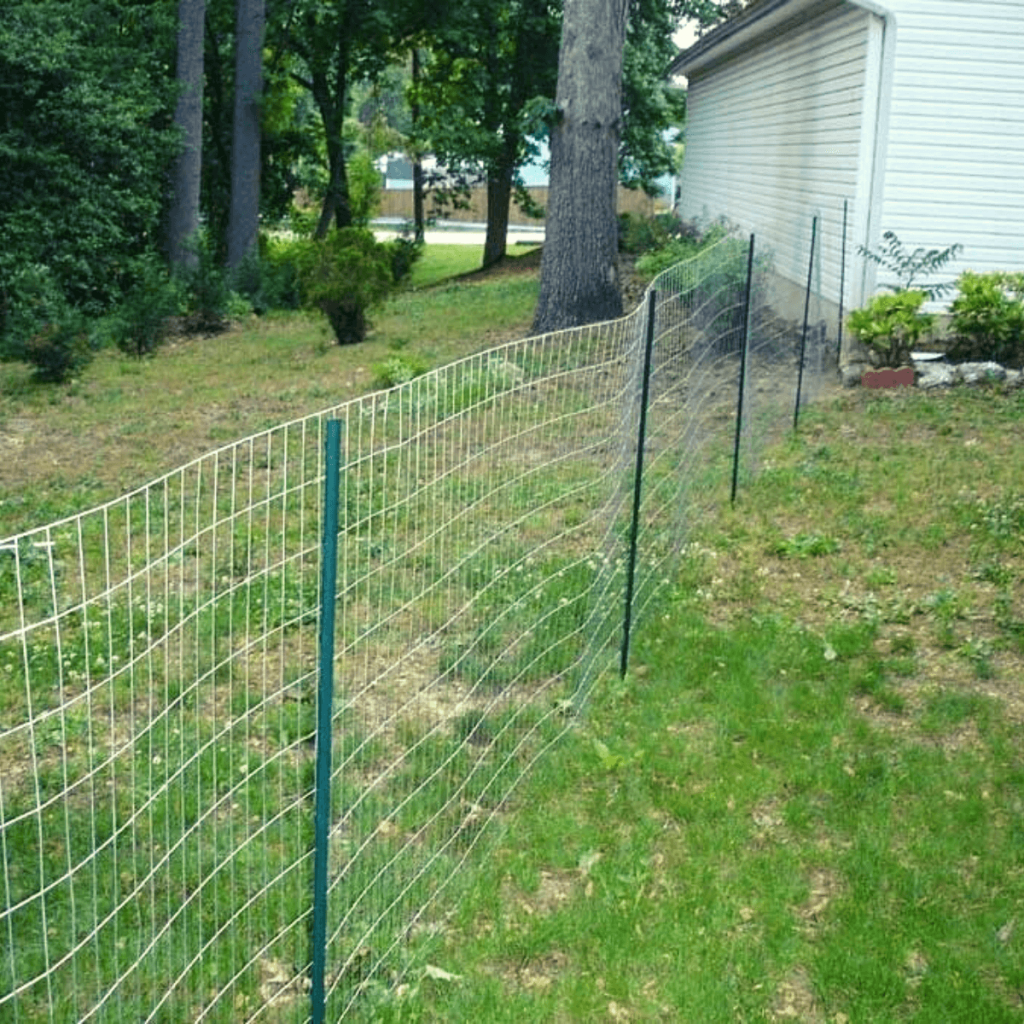
You should use a wire fencing on wooden posts/frames to get a cheap DIY dog fence solution. The fencing wire is relatively cheap, with a cost of about $1.50 per linear foot. The cost of wood will depend on your yard dimensions, and you will have to get quick-setting cement for setting wooden fence posts. This fence style is not as pleasing to look at, but it’s very practical.
Best All Around: Vinyl Fencing
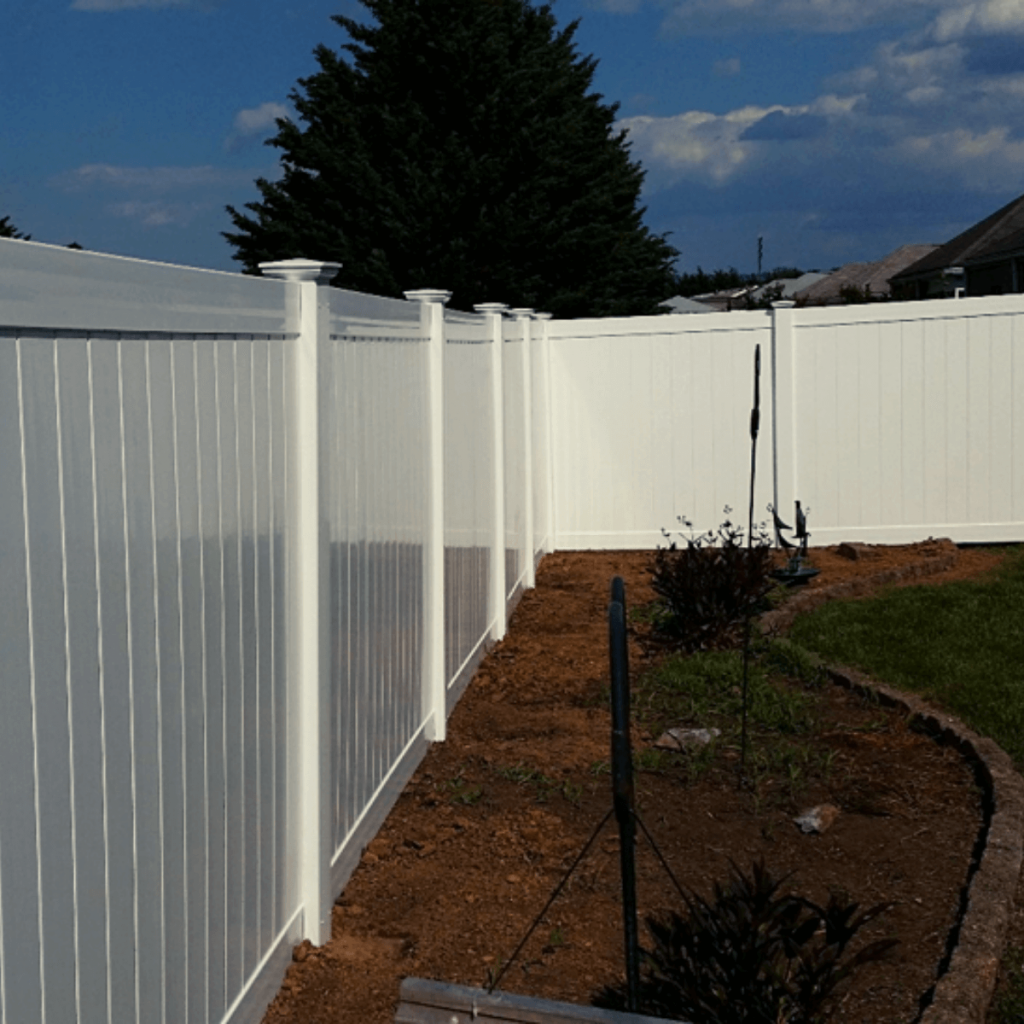
We selected vinyl fencing as the best all-round option for its longevity and esthetics, because it keeps your pet protected and enables them to see beyond the fence.
Vinyl fencing will last (so much longer than wood) for decades, making it suitable for homeowners who plan to stay in their homes for many years. The professionally built vinyl fence can cost more than $10,000 based upon your property’s size and the height of the fence you chose. Fortunately, there are also choices for DIY.
The Most Simple: Chain-Link Fences
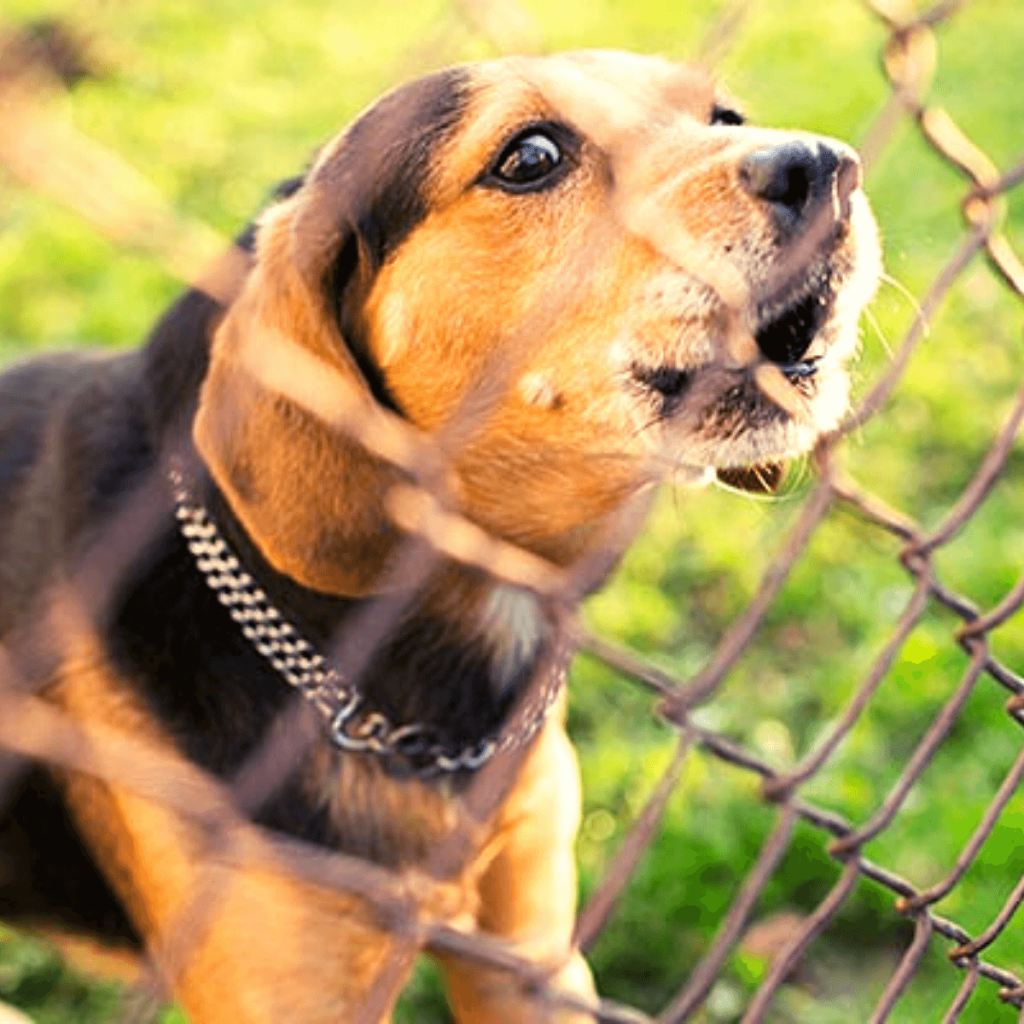
If the looks are not your top priority, your dog would enjoy a chain-link fence in the backyard. Chain-link fences are cheaper than wooden fences and suitable for keeping your dogs in while keeping other animals out. They also have a long life cycle of nearly 20 years. A chain link fence can also be fixed very quickly. Increase the fence’s appeal by going for rustproof material with vinyl coating.
Appealing Picket Fences

A wooden, low-sitting picket fence fulfills the style and protection requirements of smaller animals or dogs who are unlikely to climb (or break a wooden fence like my big dog had once done). This style of fence keeps your dog secure in the yard and offers an enticing conventional look.
These are DIY friendly picket fences with multiple fencing designs you can find at home improvement shops. But pay attention: wooden picket fences need to be stained regularly and repaired or painted. Consider having a vinyl fence instead of wood to decrease upkeep of this cool white picket.
Metal Fences for Larger Dogs

Iron, aluminum or steel. Whatever metal you pick, a dog fence made of one of the durable materials will last for years, look fantastic and even restrain the most powerful dog.
Metal fences with low upkeep provide a variety of designs and colors, which can be rendered to your taste. A bit of class is also added to your backyard. They’re of course the most expensive style of fence, but they earn points for endurance and elegance.
Fence Options for Dogs That Enjoy Digging
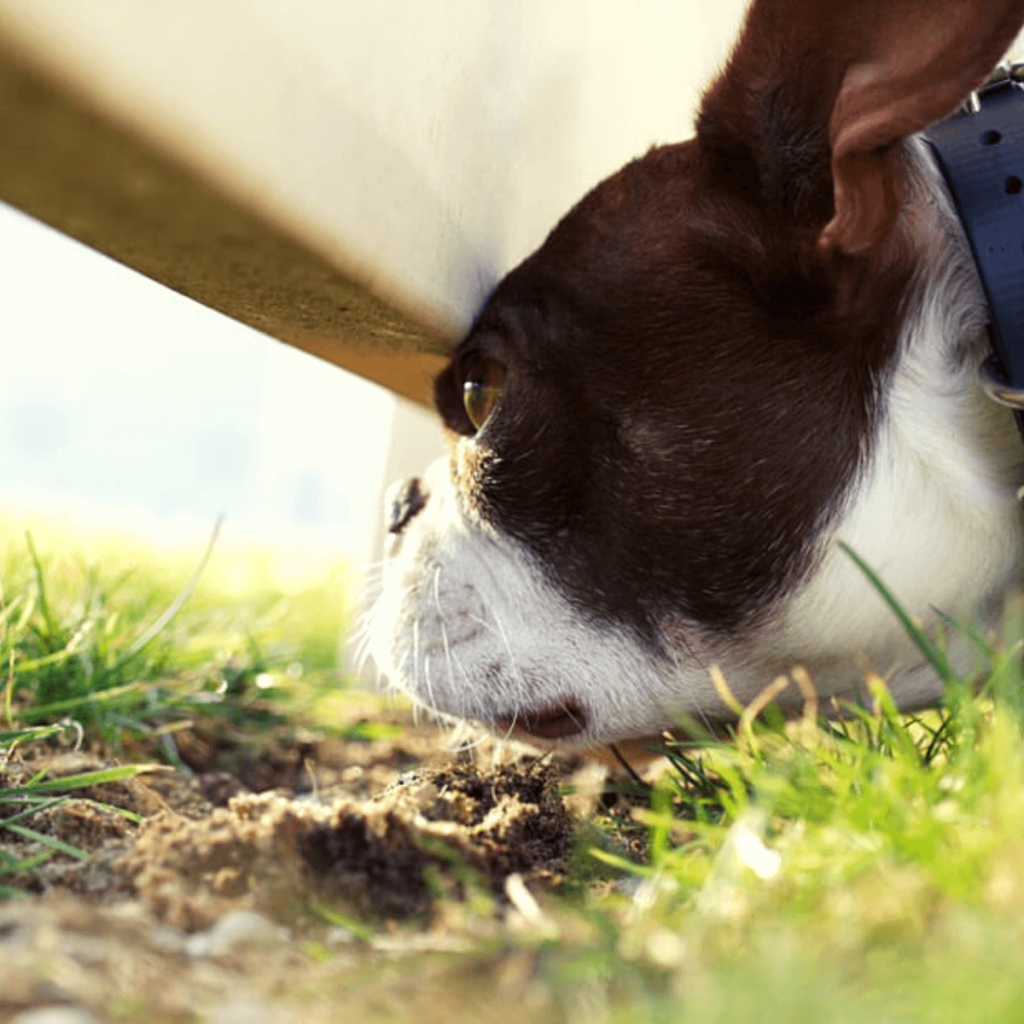
A dog who enjoys digging will undo all of the work you did putting up the fence that’s supposed to contain them. In this case you will want chain-link or a wood-frame fence. You can dig a trench near the fence line and place the fencing material a foot or two underground. Place the concrete foundation around the fence and the chain link or wire in the thick and wet concrete.
Fence Options for Small Dogs

Unless its legs are built with springs, your little dog would fine in a lower fence like this wood picket fence, which is 3-1/2-foot high, and you can install it yourself. Lower heights are also available in vinyl and metal fencing. The lower the height of the fence, the lower the cost
Keep in mind that a low fence is suitable for dogs lacking a good leaping, jumping or climbing reflex. You’ll need a bigger fence if your little dog is a super-athlete.
Fencing Made for Dogs That Like to Jump and Climb
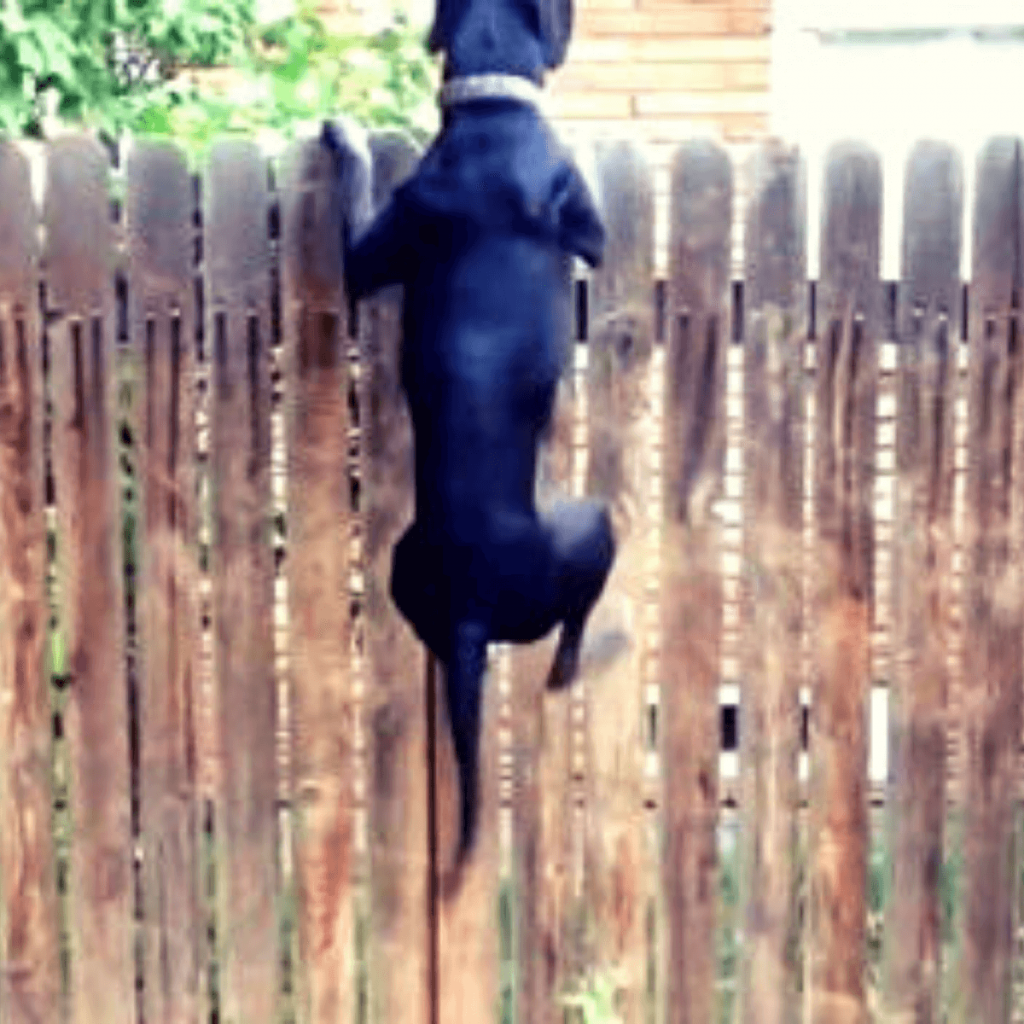
Consider a long fence that doesn’t have footholds—or rather, paw holders—if your dog is a four-legged acrobat. Wooden or vinyl fence with shutters are good bets or a high chain link or a wire / Wood frame fencing can be installed.
An additional option? Try the invisible fence first to see if it is appropriate to hold your magician of a dog in a safe position until you determine which tall form of fence to invest in.
How to make a cheap fence for dogs
There are a few things you can do to make a cheap fence for dogs:
1. Use chicken wire. This is a good option if you need a temporary fence or one that isn’t too tall. Chicken wire is also relatively easy to work with.
2. Build a frame out of wood or metal pipes. This option is more sturdy than chicken wire and can be used for taller fences. You’ll need to make sure the frame is securely fastened together.
3. Attach mesh fencing to an existing fence. This is a good way to add height to a fence without having to start from scratch. It’s also relatively easy to do.
4. Use cattle panels. These are sturdy panels that are typically used for livestock fencing. They can be adapted for use as a dog fence by attaching them to posts or an existing fence.
5. Build a pallet fence. This is a good option if you have access to pallets and want a rustic-looking fence. It’s also a relatively easy fence to build.
6. Use privacy slats. These are narrow strips of material that can be inserted into chain link fencing. They provide additional privacy and can also help keep dogs from escaping through the fence.
7. Install an underground dog fence. This is a system that uses buried wires to create an invisible boundary for your dog. It’s a great option if you’re worried about your dog escaping or if you have a large property.
8. Build a fence out of PVC pipe. This is a good option if you want a durable fence that’s also easy to clean.

